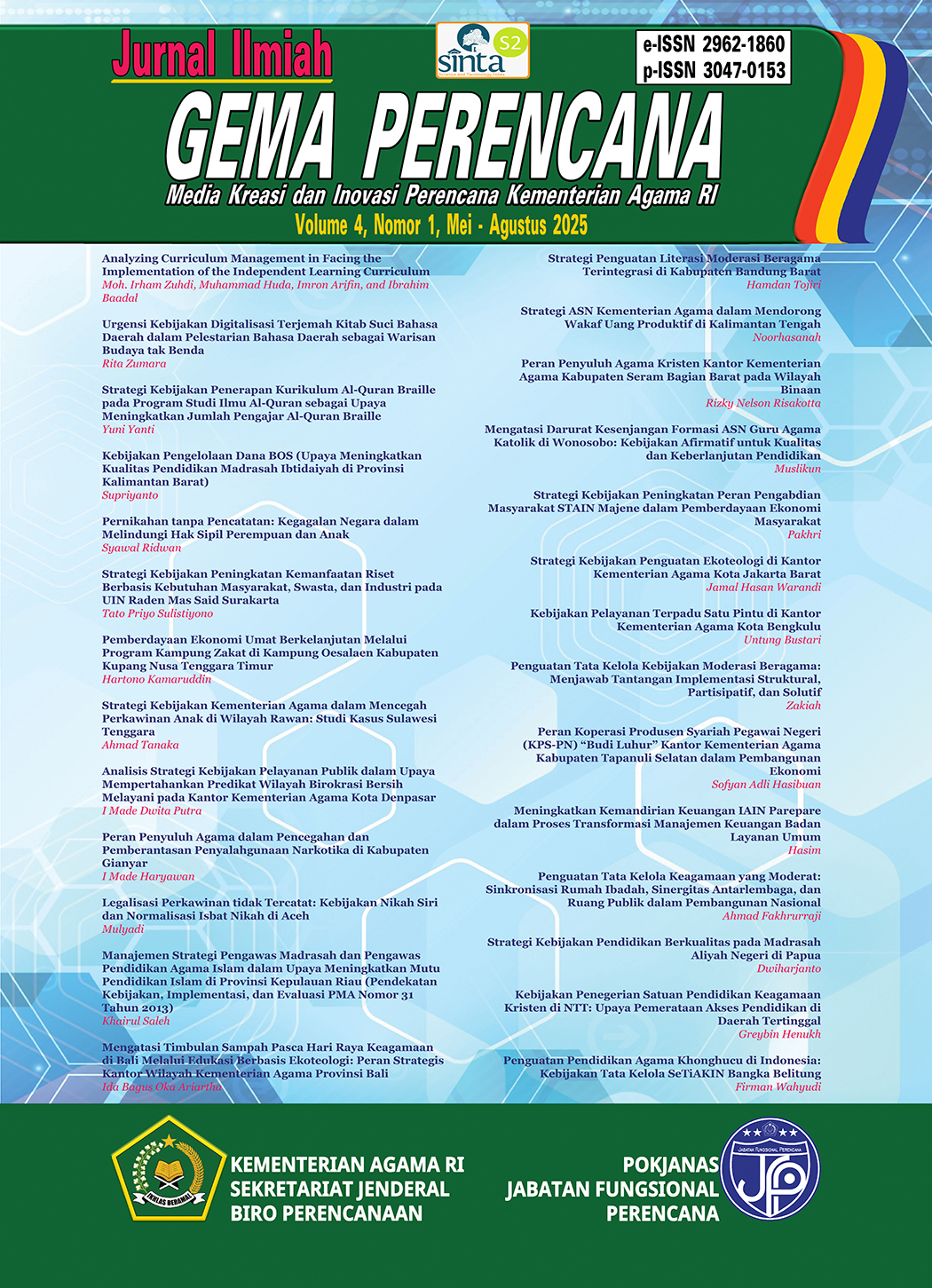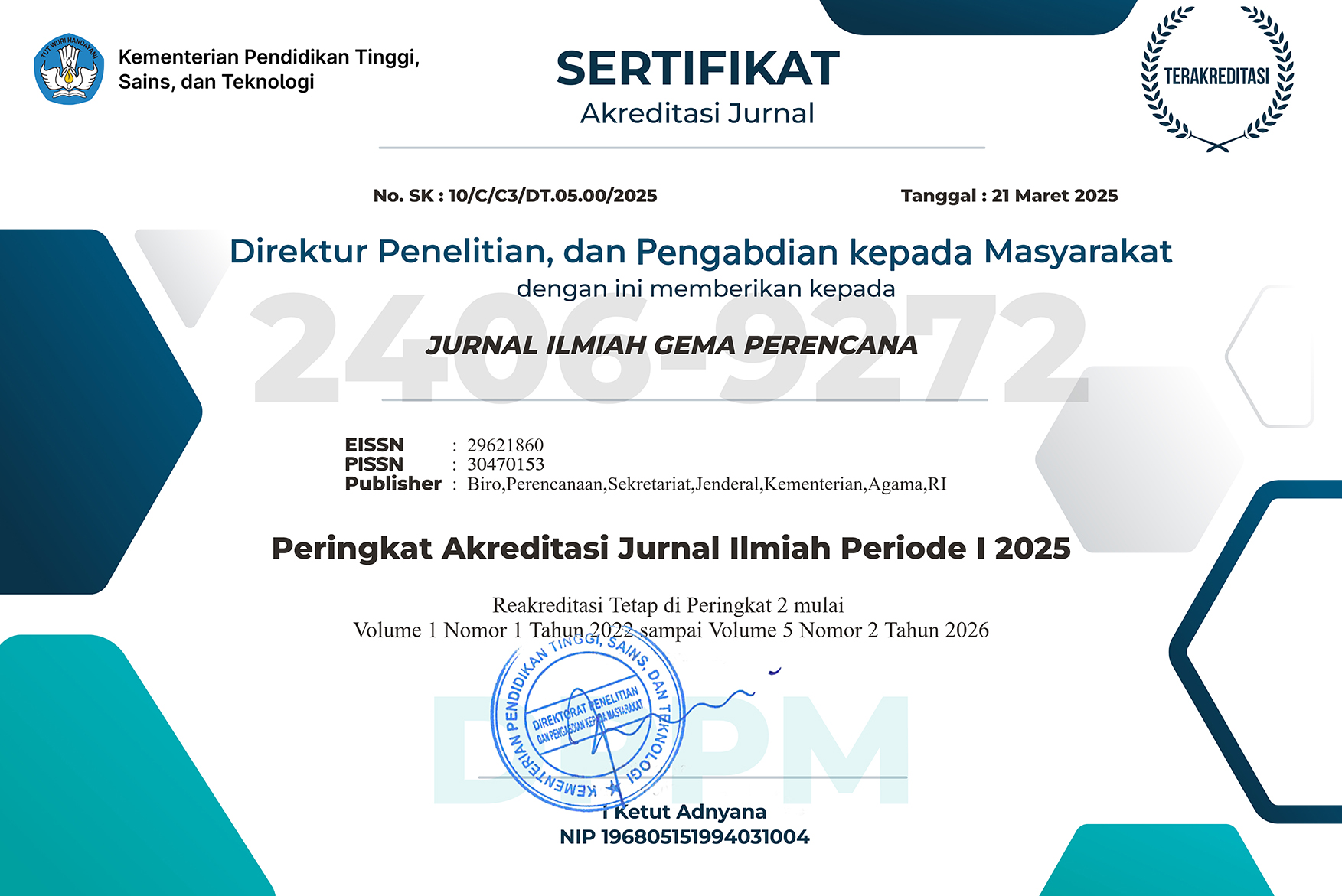The Urgency of Digitizing Local Language Scriptures in Preserving Local Languages as Intangible Cultural Heritage
DOI:
https://doi.org/10.61860/jigp.v4i1.175Abstract
This policy paper discusses policies in the preservation of local languages in Indonesia from the threat of extinction due to various factors, such as migration, speaker attitudes, and the dominance of national and international languages because local languages have an important role in cultural identity and community knowledge systems. This paper aims to discuss the importance of policies that support the preservation of local languages through the potential application of digital technology while increasing people's religious understanding, using a qualitative method of policy review with a SWOT analysis approach, as well as a scoring-based evaluation. The results show that although the policy of digitizing translations of the Holy Scriptures can expand public access to regional language-based religious literacy, there are still some weaknesses that need to be overcome, namely (1) limited digital infrastructure in remote areas, (2) differences in the vision and priorities of various institutions in the collaboration process, (3) resistance from less prepared institutions, (4) maintaining the quality of digitization implementation and (5) sustainable funding. Therefore, this paper recommends several improvements, including:(1) Identification of local languages that require digitization and available resources. (2) Development of digital platforms, so that they are richer and more powerful. (3) Improve digital literacy by organizing training, socialization in local communities to facilitate technology adoption; (4) Integrate programs with national policies (5) Provide offline solutions to overcome internet network limitations.
Downloads
References
_Buku IMDI Bab 1-5_V10. (t.t.).
Bahasa dan Petabahasa di Indonesia. (t.t.). https://petabahasa.kemdikbud. go.id/
Buku_Publikasi_IMDI_2022_ID. (t.t.).
Campbell, L., & Belew, A. (Ed.). (2018). Cataloguing the world’s endangered languages. Routledge.
Data IMDI Nasional tahun 2022—2024. (t.t.). https://imdi.sdmdigital.id/home
Final IMDI 2023_R1-1. (t.t.).
Hardyanto. (2025, Januari 10). Merdeka Belajar untuk Revitalisasi Bahasa Daerah yang Terancam. https://setkab.go.id/merdeka-belajar-untuk-revitalisasi-bahasa-daerah-yang-terancam/
Himmelmann, N. P. (1998). Documentary and descriptive linguistics. Linguistics, 36(1). https://doi.org/10.1515/ling.1998.36.1.161
Kemdikdasmen. (t.t.). Merdeka Belajar Episode 17: Revitalisasi Bahasa Daerah. https://www.youtube.com/watch?v=nkzI9h5nnAE
PP Nomor 57 Tahun 2014. (t.t.).
Profil-suku-dan-keragaman-bahasa-daerah-hasil-long-form-sensus-penduduk-2020. (t.t.).
Renstra Kemenag (30Dec24). (t.t.).
Statistik-sosial-budaya-2018. (t.t.).
Statistik-sosial-budaya-2021. (t.t.).
Tondo, F. H. (2009). Kepunahan Bahasa-Bahasa Daerah: Faktor Penyebab dan Implikasi Etnolinguistis. 11(2).
UNESCO: Setiap Dua Minggu, Satu Bahasa Daerah Punah di Dunia. (t.t.). https://jabarprov.go.id/berita/unesco-setiap-dua-minggu-satu-bahasa-daerah-punah-di-dunia-12944
Downloads
Published
How to Cite
Issue
Section
License
Copyright (c) 2025 Rita Zumara

This work is licensed under a Creative Commons Attribution 4.0 International License.









